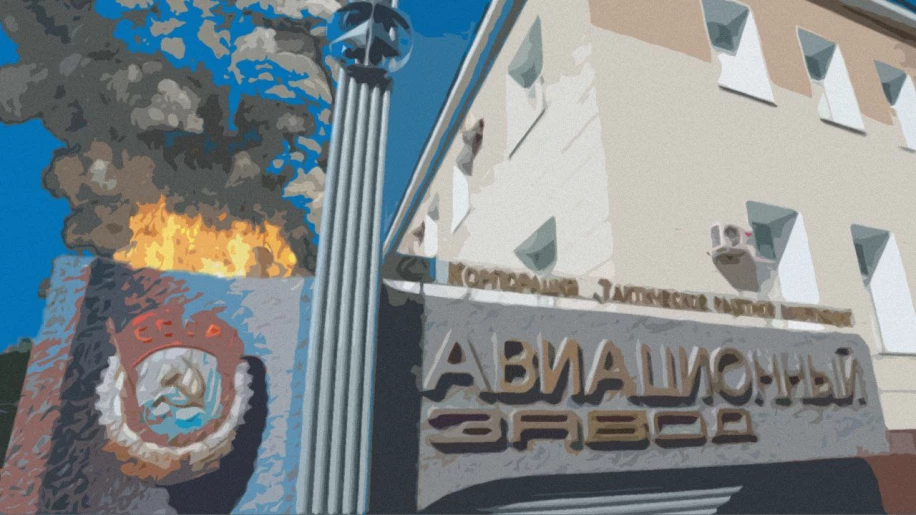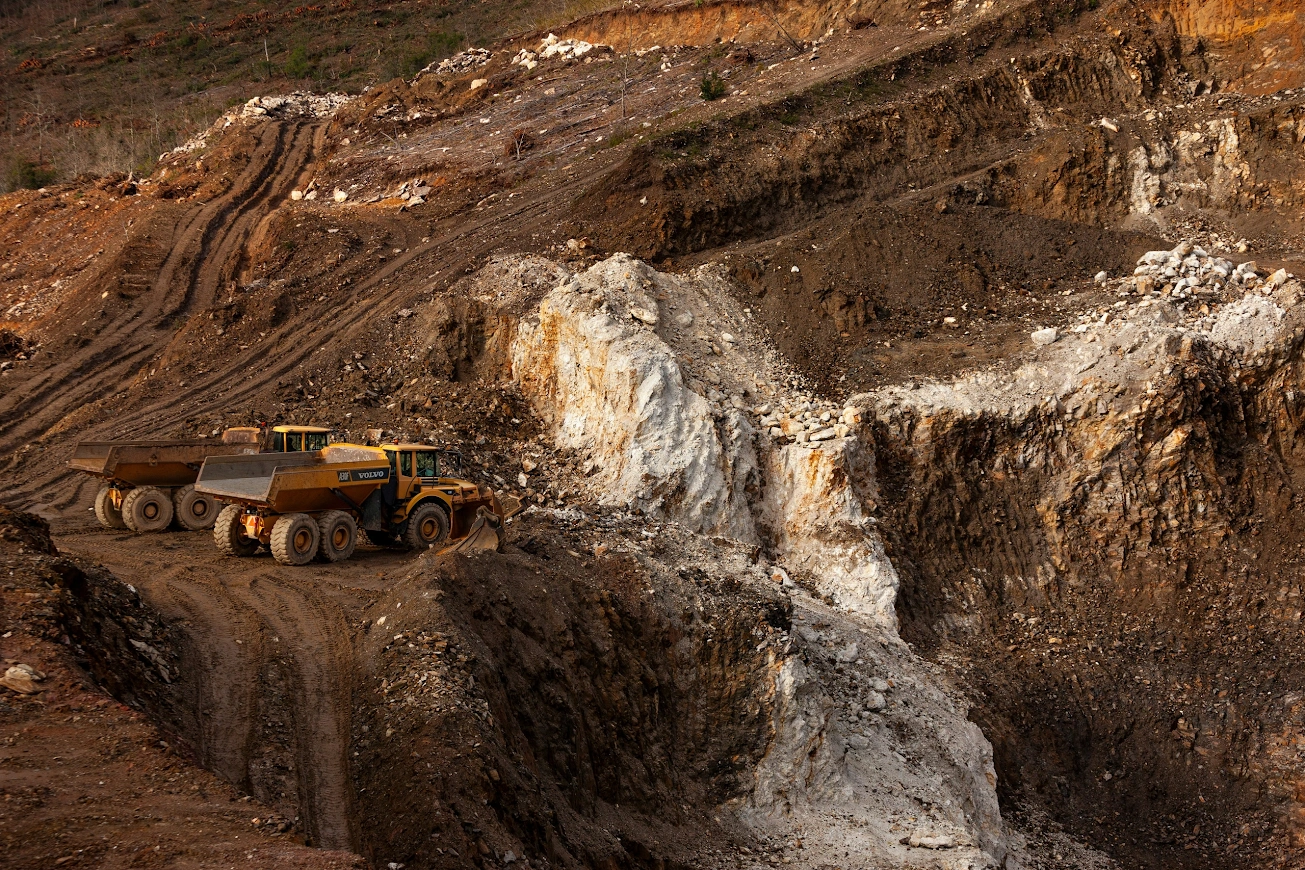The Smolensk Aviation Plant (SmAP) is part of the "Tactical Missile Armament" corporation and the "Raduga" construction office. SmAP is a manufacturer of X-55, X-59 missiles, and small aircraft used for training Russian pilots.
How does this plant operate, where is it located, how is the enterprise in the Czech Republic connected to the Smolensk Aviaplant, and how many X-55/59 missiles are armed in Russia? Find out about this and more in the Molfar article.
From foldable the furniture to X-55 Missiles
In the industrial zone, a building with a sleek, plastic facade stands on the northern outskirts of the city of Smolensk. Behind the fences lie massive hangars, where they manufacture complex picnic furniture, backpack chairs for fishermen, and 'souvenir badges.' But such trinkets are more of a hobby for the Russian enterprise — the Smolensk Aviation Plant is known for its lethal X-55 and X-59 missiles. They also build aircraft on which Russian pilots train.
In this article from September 15, 2022, at the international military-technical forum "Army-2022," a project was presented for the civilian thermal power market — a steam-plasma burner device with intracycle fuel gasification. Notably, the patent for the product was obtained by scientific figures of the university that was engaged in its development. Among other things, SmAP produces picnic furniture, chairs for fishermen, and souvenir products.
On October 2, 2023, Ukraine's Main Intelligence Directorate (GUR) reported that strike drones attacked this Russian plant — 3 out of 4 launched uncrewed aerial vehicles disrupted the production process of X-59 missiles.
Drones Manufactured by SmAP
"Pchela" (Honeybee) is a UAV for the 'Stroy-P' reconnaissance complex, targeted at Russian border guards. The flight range is 60 km, speed — 180 km/h, and duration — 2 hours.
There is another type of UAV, the name of which has yet to be identified. Still, it is known that SmAP, together with JSC Corporation "Tactical Missile Armament',' of which the plant is a part, and the design bureau "Modern Aviation Technologies," are developers of an unmanned cargo-passenger vertical takeoff and landing aircraft for urban air mobility. This drone was presented at the International Aviation and Space Salon' MAKS-2021.' Flight range — 90 km, cruising speed — 180 km/h, flight duration — 50 min, payload — 270 kg.
Missiles manufactured by SmAP
As we wrote, besides manufacturing drones and folding chairs, the Smolensk Aviation Plant produces X-55, X-59 missiles, which Russia uses to shell Ukraine.
— Kh-55 —
A strategic aviation 'winged' missile. It was created back in the 1970s in the Soviet Union. This missile was also produced at the "Raduga" enterprise, which now orders X-55 from the Smolensk aviation plant.
Molfar published an article about the "Raduga" design bureau. We recommend reviewing this publication.
— Kh-59 —
An 'air-to-ground' guided missile. The X-59 missiles are used in Russian aviation and can be installed on various military aircraft, such as Su-24, Su-27, MiG-29, Tu-95, and others. There are several modifications of the X-59 missile, each of which can have different characteristics and capabilities.
The developer of these missiles is the same MKB 'Raduga.' Engines for the X-59 "winged" missiles are manufactured at the production capacities of the former Rybinsk Engine Building Plant (JSC' Rybinsk Motors'), which is 2001, as a result of a merger with JSC 'A.Lyulka-Saturn', became part of the newly formed PJSC' Scientific and Production Association 'Saturn'.
The X-59M missiles are equipped with GLONASS/GPS navigation devices. Receivers of the Russian GLONASS system have low resistance to intentional interference. They are subject to electronic suppression in combat conditions. Kh-59-type missiles can use printed circuit boards of satellite navigation signal receiver units in foreign-made satellite navigation systems. Kh-59 missiles, fragments found in Ukraine, contained electronic components from foreign manufacturers from the USA and Europe, produced in 2014-2020.
July 19, 2023 — attack on Odessa region
On the night of July 19, 2023, Russians struck the Odessa region with Kh-22, Kh-59, "Onyx" missiles, and also Shahed-136 drones. The X-59 missile was launched by Russians from a Su-35 fighter over the Black Sea. Ukrainian air defense forces shot it down as it approached the coast. Hits on grain and oil terminals were recorded. Tanks and loading equipment were damaged. At least six Odessans, including one child, were injured due to falling drone debris.
August 30, 2023 — Attack on Kyiv
During one of the most massive bombardments of the Ukrainian capital, Russians used X-55 missiles in combination with other missiles (X-101/555) and 'shaheds.' A total of 44 air targets were recorded in Ukraine's sky. Most were headed for Kyiv. In one of the capital's districts, missile debris fell on the territory of an enterprise, causing a fire. Two security guards of the enterprise were killed. There are also reports of three injured.
September 17, 2023 — Strike on the Odessa Region
10 air-based missiles X-101/X-555 and X-55 were launched from 9 Tu-95MS strategic aviation aircraft from the Engels area. The main direction of the strike was the Odessa region. There are reports of missile hits on the territory of a civilian agricultural enterprise.
Aircraft for Training Russian Pilots from SmAP
In addition to missiles, the Smolensk Aviation Plant also manufactures aircraft. For example, the Yak-18T — a Soviet four-seat plane developed by the A.S. Yakovlev Design Bureau in the 1960s. This aircraft is one of the modifications of the original Yak-18, which was produced after World War II. It is still used for pilot training, sports, and tourist aircraft."
Based on the Yak-18T aircraft, the light aircraft SM-2000 was also created. It has passenger and training versions.
The SM-92T "Turbo-Finist" is an aircraft developed in Russia. It is known for its ability to take off and land over short distances and on small airfields. It is a modification of the SM-92 'Finist' aircraft, which, in turn, was created analogously to the Yak-12. The 'Turbo-Finist' is a versatile single-engine aircraft used for various tasks, including passenger and cargo transportation, agricultural work, medical evacuation, patrolling, and more.
The previous version of this aircraft, the SM-92, was also manufactured at the Smolensk Aviation Plant. It has a piston engine and is slightly slower.
The M-55 "Geophysics" reconnaissance military aircraft is also produced at SmAP. It is an aircraft developed in the Soviet Union by the design bureau of Nikolay Rostislavovich Mil (Mil OKB). This aircraft is designed for conducting atmospheric research and surveys at high altitudes. The M-55 can fly at altitudes up to 21,000 meters and is used for scientific purposes — including atmospheric observation and surveillance.
Each of these compact aircraft plays its role in the military sphere of the Russian Federation, utilizing and adapting their functions, from pilot training to reconnaissance missions and cargo transportation.
Branch in Prague and staff expansion
The Smolensk Aviation Plant is part of the Russian state corporation "Tactical Missile Armament." The design bureau for developing 'winged' missiles "Raduga," which is the primary customer for missile production at the Smolensk Aviation Plant, is also part of this corporation.
In 2010, the SmAP plant, together with the aircraft manufacturer PRAGUE Avia, created a company in the Czech Republic — CONSUL group of companies s.r.o. While the Smolensk Aviation Plant was sanctioned by the USA, European countries, Canada, and Japan in 2022 because the plant is part of the Russian Federation defense-industrial base and manufactures weapons, no such sanctions were found on the Czech branch.
By 2025, SmAP will have contracted orders to perform tasks for the Ministry of Defense of the RF. Their parent corporation — "Tactical Missile Armament" ('Тактическое ракетное вооружение') — acts as the primary customer. Due to an increase in the order portfolio, the plant plans to increase the number of employees from 2,000 to 4,300 people by 2024.
Both the plant and the corporation have filed reports since 2016, so verifying the exact number of employees is impossible. However, it is known that by mid-November 2022, 120 vacancies in 18 directions were open — most of all, they were looking for turners, fitters, and milling machine operators.
Financial Review of the Smolensk Plant
According to the volume of purchases in rubles conducted by the plant from 2013 to November 2022, the purchase volume has decreased. The graph shows assets in millions of rubles according to form 222-F3 of purchases.
CEO, Andrey Mikhailovich Toporkov, reported that in 2021 the plant contributed to budgets of various levels amounting to ~13.6 million dollars, of which 4.5 million dollars went to the budget of the Smolensk region. Over 8 months of 2022, the plant paid taxes amounting to 26 million dollars, of which ~2.6 million dollars were received by the Smolensk region budget. Let's go by the proportion of tax payments in 2021. Over 8 months, the plant could have a turnover from 131 million to 174 million dollars.
The profit volume from the plant's product sales amounted to 86.9 million dollars in 2021. By the end of 2022, a profit increase of 60% to ~145 million dollars is planned. In 2023 — up to ~325 million dollars, and in 2024 — up to ~356 million dollars.
A gradual increase in the plant's net profit to ~36 million dollars is planned by 2024, compared to 3.4 million dollars in 2021. There are state orders until 2030. Employees are given bonuses for overtime work. They are offered to work on weekends and holidays. In August 2022, SmAP received a contract from the Russian Ministry of Defense to manufacture "air-ship" class missiles at the "Army-2022" exhibition. According to the specification, this could be a missile of the Kh-59MK / Kh-59A modification.
Unmasking the Leadership of the Smolensk Aviation Plant
Andrey Mikhailovich Toporkov (russian — Топорков Андрей Михайлович) — Chief Executive Officer
Born: 06/02/1976
Personal data:
PIN: 732600841159,
Passport: 7302497088,
SNILS: 05931295070,
Contacts: am-top@yandex.ru, iam-top@yandex.ru, 79051836875, 79372754010
He served in the army and studied at Ulyanovsk State University in "economics and enterprise management." He underwent training at the Moscow School of Management "Skolkovo," where he worked on foreign projects in aviation. He studied in graduate school at the Volga University, named after Tatishchev. After finishing his studies, he worked on the railway in Ulyanovsk, then - in the company "Volzhskie motory" as the head of the bureau, managed the company "Volzhskaya investment company," was the CEO of JSC "UAZ-Metallurgy." Toporkov worked as the first deputy CEO for finance of the aircraft factory CJSC "Aviastar-SP," which produces transport aircraft. He was recommended for this position by the governor of the Ulyanovsk region, Sergey Morozov. The corporation is part of the state complex JSC "United Aircraft Corporation." He also worked in the food product manufacturing company LLC "Volgalakta." He was the deputy director for program management in the Ulyanovsk Design Bureau of Instrument Engineering (UKBP), part of "Rostech."
In 2019, he received income from the company "Zapad Development," specializing in designing and constructing buildings and real estate trading. He received a salary from the company "SZ Central." In 2019, he opened a sole proprietorship, indicated in the details for payment to the Era-auto auto goods store. Still, the sole proprietorship was closed (date not specified).
In July 2022, Toporkov was appointed the first deputy CEO of PJSC "Smolensk Aviation Plant," just a month later on August 24 - he was promoted to the CEO of PJSC "SmAP."
We also observe that the Smolensk Aviation Plant holds pivotal importance for the Russian aviation and missile industry, especially in missile manufacturing and providing technical support to other enterprises. If the plant continues production, an increase in manufacturing capacity and a potential surge in weapon and military equipment output can be anticipated. Considering historical data and the current situation, this could intensify the war. The absence of sanctions on the subsidiary enterprise might assist the plant in circumventing international sanctions, continuing to receive the financing and resources necessary for production. This could be particularly crucial in the context of military aggression and the aspiration to augment weapon production.
UPD
From the updates, it became known that on November 7, 2023, sanctions against the branch of the Smolensk Aviation Plant began to take effect. The information was published on the website of the Ministry of Justice of the Czech Republic. Our analysts have confirmed this information.




